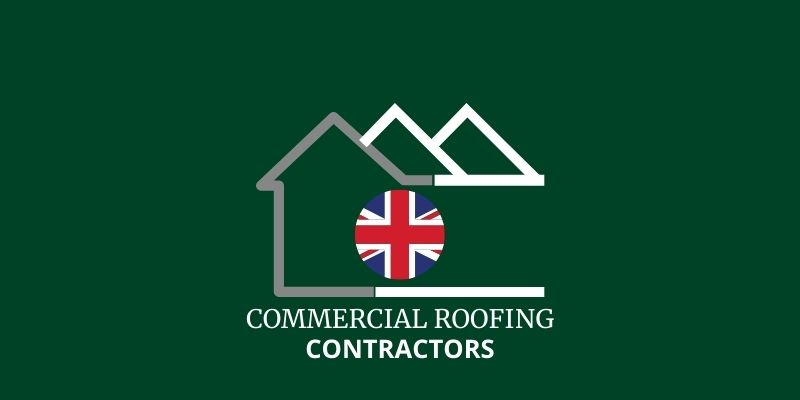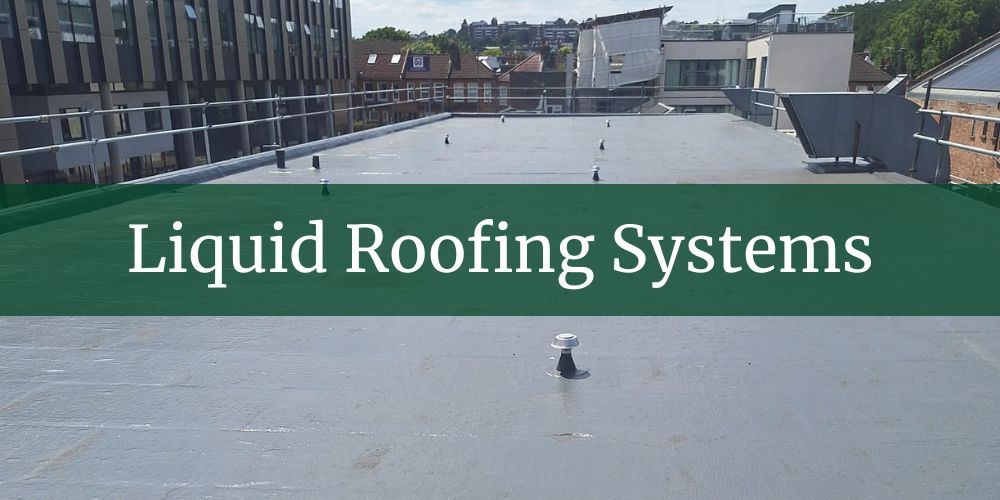Liquid roofing systems are particularly advantageous for adapting to complex roof shapes, providing seamless coverage that ensures long-lasting protection and waterproofing. The flexibility of liquid roofing allows it to conform to intricate structures and details, making it highly effective for the UK's diverse architectural designs. This adaptability not only enhances the longevity and performance of the roofing system but also minimises the need for extensive customisation and frequent maintenance. Commercial Roofing Contractors provide liquid applied roofing services across the United Kingdom.
For UK commercial building owners and facility managers, understanding how liquid roofing systems can meet complex architectural demands is vital for ensuring roof integrity and cost efficiency. In this blog, we will delve deeper into how liquid roofing systems excel in adapting to complex roof shapes, exploring their benefits, challenges, and what makes them a smart choice for protecting your architectural investment.
What Are Liquid Roofing Systems and How Do They Work?
Liquid roofing systems involve the application of a seamless, liquid-based coating that cures to form a durable, weather-resistant membrane. Primarily used for flat or low-sloping roofs, these systems are known for their adaptability, energy efficiency, and ability to create a continuous barrier against environmental elements. Applied directly onto existing roofs, they provide a cost-effective solution for roof renewal without requiring extensive removal or structural changes.
The main features and advantages of liquid roofing systems are summarised below:
- Seamless Waterproofing: Creates a continuous, impermeable barrier to water.
- Cost-Efficiency: Reduces roofing costs by eliminating major re-roofing processes.
- Flexibility: Adapts easily to roof expansions, contractions, and structural movements.
- Energy Efficiency: Reflects solar heat to reduce cooling costs and energy consumption.
- Longevity: Enhances the lifespan of the existing roof substrate.
1. Seamless Waterproofing: Creates a continuous, impermeable barrier to water.
Seamless waterproofing involves applying a liquid membrane that provides an uninterrupted, protective layer across the roof surface. In liquid roofing systems, this property ensures that there are no joints, seams, or weak points susceptible to water ingress. It significantly reduces the risks of leaks and water damage, which are common issues with traditional roofing methods. By creating an impermeable barrier, liquid roofing systems offer robust protection against water penetration and extend the overall integrity of the roof structure.
2. Cost-Efficiency: Reduces roofing costs by eliminating major re-roofing processes.
Cost-efficiency refers to achieving the desired outcome at a reduced expenditure. Liquid roofing systems are often applied over existing roof surfaces, minimising the need for costly and time-consuming tear-offs or complete roof replacements. This approach not only saves on materials and labour but also reduces disruption to the building's operations. Moreover, by extending the lifespan of the existing roof, these systems contribute to long-term savings on maintenance and future re-roofing projects.
3. Flexibility: Adapts easily to roof expansions, contractions, and structural movements.
Flexibility in roofing refers to the ability to accommodate movements and shifts in the building structure. The liquid membrane in these systems cures into an elastic coat, capable of stretching or contracting with temperature fluctuations or structural changes. This feature is crucial in preventing cracks or splits that often occur in more rigid roofing materials. The adaptable nature of liquid roofing systems is especially beneficial for buildings in areas with variable temperatures, thereby maintaining roof integrity over time.
4. Energy Efficiency: Reflects solar heat to reduce cooling costs and energy consumption.
Energy efficiency in roofing implies the use of materials or techniques that reduce energy consumption. Liquid roofing systems often involve coatings that reflect solar radiation, diminishing heat absorption by the building. This capability effectively lowers indoor temperatures and reduces the dependency on air conditioning systems. As a result, these systems can lead to notable savings on energy bills while contributing to a cooler and more sustainable indoor environment.
5. Longevity: Enhances the lifespan of the existing roof substrate.
Longevity refers to the capacity of materials to maintain their functional integrity over an extended period. The protective membrane formed by liquid roofing resists weathering, UV radiation, and other environmental factors that degrade traditional roofing materials. By shielding the underlying substrate from these damaging elements, the lifespan of the existing roof is significantly increased. This durability ensures that building owners can rely on the roof's performance for many years, with reduced frequency of repairs and maintenance.
Have a question about an upcoming project?
How Do Liquid Roofing Systems Benefit Complex Roof Shapes?
Liquid roofing systems are highly flexible, allowing them to adapt to complex roof shapes seamlessly. This is because they create a continuous, seamless membrane that can easily conform to any surface irregularities. Due to their adaptability, they are exceptionally effective in ensuring complete coverage and providing a watertight seal on roofs with intricate designs.
Here are five key benefits that liquid roofing systems offer for complex roof shapes:
- Mouldability: Seamlessly contours to unique and intricate roof geometries with ease.
- Seamless Application: Eliminates joins, reducing leak risks on complex structures.
- Lightweight Design: Minimises stress on structurally complex roofing systems.
- Versatile Material Compatibility: Adheres to various substrates commonly found on complex roofs.
- Quick Installation: Rapid curing reduces construction time significantly on complex geometries.
1. Mouldability: Seamlessly contours to unique and intricate roof geometries with ease.
Mouldability refers to the ability of a material to adapt its shape to fit irregular contours. For roofs with unusual shapes, liquid roofing systems can perfectly mould themselves to the roof’s curves and angles. This quality ensures a uniform thickness and coverage, enhancing the roof's integrity. The adaptability of the liquid system is essential for maintaining the roof's aesthetic appeal and functional waterproofing, and this flexibility dramatically reduces the need for cutting and fitting that is common with traditional roofing materials.
2. Seamless Application: Eliminates joins, reducing leak risks on complex structures.
Seamless application means creating a continuous surface without joints or seams that can be potential weak points. A major advantage of liquid roofing systems on complex roofs is the elimination of seams. Every join can be a potential leakage point, especially on intricate structures where water might accumulate. The application of a liquid membrane eradicates these issues by providing a single, continuous layer which can vastly increase the waterproof reliability of the roof.
3. Lightweight Design: Minimises stress on structurally complex roofing systems.
Lightweight design refers to the reduced weight burden imposed by roofing materials. Liquid roofing systems are generally lighter than traditional options, resulting in less stress on the underlying structure. This is particularly beneficial for complex roof shapes, where load distribution can be uneven. The reduced weight can also mean fewer support structures are necessary, preserving the building's architectural intent without compromising durability or performance.
4. Versatile Material Compatibility: Adheres to various substrates commonly found on complex roofs.
Versatile material compatibility means the ability to bind effectively to different surface materials. Complex roofs often incorporate diverse materials to achieve their unique designs. Liquid roofing can bond with almost any substrate, including; metal, concrete, and bitumen. This versatility means that the existing roof materials do not need to be replaced or altered prior to application, saving both time and resources during renovation or repair projects.
5. Quick Installation: Rapid curing reduces construction time significantly on complex geometries.
Quick installation refers to the ability to apply and set the roofing solution rapidly. The fast-curing nature of many liquid roofing systems makes them ideally suited for complex projects. This is advantageous as it minimises disruption, reduces labour costs, and mitigates weather-related delays. For intricate shapes, where traditional methods would require longer installation times due to cutting and fitting, the quick-setting liquid approach allows for a faster, efficient project completion.
Why Are Liquid Roofing Solutions Ideal for Commercial Buildings?
Liquid roofing solutions are ideal for commercial buildings due to their seamless waterproof barrier and ease of application. This type of roofing provides excellent protection against leaks, weather damage, and UV radiation, making it both durable and energy efficient. The liquid application can cater to complex roof shapes, ensuring comprehensive coverage and extending the roof’s lifespan. Here are some reasons why liquid roofing solutions are particularly suitable for commercial properties:
- Seamless Waterproof Barrier: Eliminates risks of leaks with no joints or seams.
- Ease of Application: Simple installation over existing roofing minimises business disruptions.
- Durability: Provides long-lasting protection against diverse weather conditions and environmental elements.
- Energy Efficiency: Reflective properties help lower energy costs by reducing heat absorption.
- Versatility: Adapts to complex roof shapes, ensuring full coverage and protection.
1. Seamless Waterproof Barrier: Eliminates risks of leaks with no joints or seams.
A seamless waterproof barrier means there are no joints or seams where water can penetrate. Liquid roofing solutions form a continuous membrane over the roof surface, preventing leaks. This feature is crucial for commercial buildings to protect valuable assets and operations from water damage. The absence of seams significantly reduces the chance of water ingress, ensuring the roof remains waterproof under various weather conditions. This protection helps to maintain the integrity of the building’s structure, preventing costly repairs.
2. Ease of Application: Simple installation over existing roofing minimises business disruptions.
Ease of application refers to the straightforward installation process of liquid roofing solutions. Liquid roofing can be applied directly over existing roofs, reducing the need for costly and time-consuming removal. This process is beneficial for businesses as it minimises interruptions to daily operations. The quick and easy application of liquid roofing means businesses can upgrade their roofing systems efficiently, saving both time and money. This allows for continued functionality with minimal inconvenience during installation.
3. Durability: Provides long-lasting protection against diverse weather conditions and environmental elements.
Durability is the ability of the roofing to withstand environmental stressors over time. Liquid roofing solutions provide robust protection against harsh weather, UV radiation, and other environmental elements. This resilience translates into fewer repairs and a longer lifespan for the roof. By investing in durable liquid roofing, businesses can expect lower maintenance costs and enhanced building longevity, ensuring a greater return on investment over time.
4. Energy Efficiency: Reflective properties help lower energy costs by reducing heat absorption.
Energy efficiency involves reducing energy consumption and costs using reflective roofing materials. Liquid roofs can be designed with reflective pigments, which reduce heat gain and lower cooling costs. Commercial buildings benefit from this efficiency by maintaining comfortable indoor temperatures while saving on energy bills. By decreasing the demand on air conditioning systems, liquid roofing contributes to sustainable building practices and long-term energy savings for commercial properties.
5. Versatility: Adapts to complex roof shapes, ensuring full coverage and protection.
Versatility in roofing refers to the adaptability of the materials to accommodate various structures. Liquid roofing's fluid nature allows it to seamlessly cover complex roof designs and hard-to-reach areas. This adaptability ensures that the entire roof surface receives adequate protection. The versatile nature of liquid roofing makes it ideal for commercial buildings with intricate architectural designs, guaranteeing full coverage and reduced risk of exposure-related damage.
Liquid roofing systems offer an exceptional solution for adapting to complex roof shapes, providing a seamless, durable, and weather-resistant barrier that is ideal for the diverse architectural designs found across commercial buildings in the United Kingdom. These systems not only enhance the structural integrity and appearance of your property but also deliver significant cost-saving benefits through improved energy efficiency and reduced maintenance needs. By investing in a quality liquid roofing system, businesses in the UK can ensure their commercial properties are well-protected against the elements, thereby safeguarding their investments in the long term.
If you are considering liquid roofing solutions for your commercial property or need expert advice on how to tackle complex roof shapes, please do not hesitate to get in touch through our contact form. Our skilled team is eager to assist you with professional guidance and a personalised approach tailored to your specific roofing requirements.

